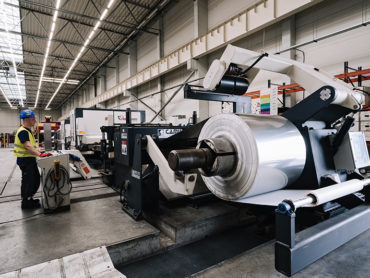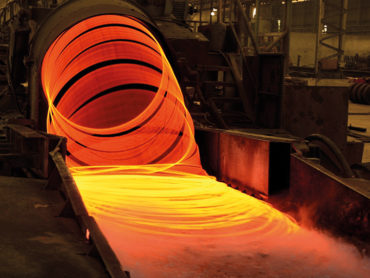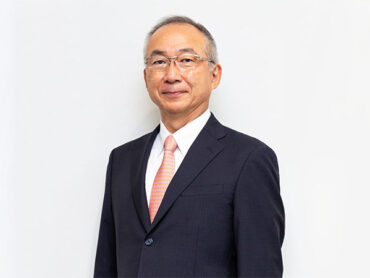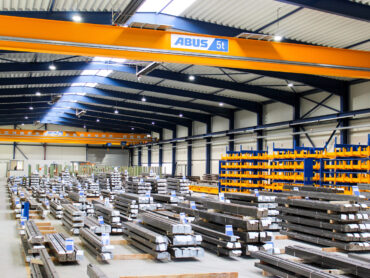The biggest hurdle stainless steel production and fabrication are facing to date is loadshedding, with this challenge overriding all previous issues and leading to diminishing staff safety, motivation, productivity and increased living costs, and contributing to a visible decline in apparent consumption during 2022, says industry organisation the Southern Africa Stainless Steel Development Association (Sassda) executive director Michel Basson.
“This is the time to rethink what we do and how we do it. The energy issue might be an opportunity to make the industry more energy efficient and less energy dependent,” he adds.
Further, the local industry is well-positioned to supply African markets with a variety of world-class stainless steel products that can rival other global competitors. This presents significant opportunities for local fabricated products, including industrial capital equipment for mining, agricultural applications, food processing and health applications, he notes.
Sassda has, therefore, put measures in place to strengthen the industry, provide access to new opportunities and capacity in other sectors, as well as to stimulate local demand.
Local demand can also be stimulated through the designation of local products in infrastructure at all government levels. We see many projects where there’s a definite contract requirement for 100% local supply. These companies require exemption from the Department of Trade, Industry and Competition (DTIC).”
Creating increased demand for South African stainless steel within key sectors such as mining, automotive and food and beverage is a key area of focus for the Sassda this year, Basson points out.
Sassda is also exploring opportunities to replace numerous applications where galvanised metals are currently being used with 3CR12, which is the world’s most specified 12% chromium utility stainless steel, he says.
Further, Sassda has various partnerships in place to facilitate localisation in industries such as food and beverage, medical, automotive, cutlery, travel and containers in multiple countries, providing a range of opportunities for the local stainless steel sector.
Sassda has also been assisting with evaluating various government-funded projects and has seen definitive growth in municipal undertakings in certain provinces.
“Unfortunately, we are currently constrained by a number of restrictions. However, we are working on these together with our private partners via the Steel Masterplan,” he notes.
This type of engagement with government forms part of Sassda’s broader mandate of engaging in key lobbying efforts for its members.
For example, Sassda was able to lobby the DTIC to exclude stainless steel from the recently announced ban on scrap metal export regulations.
Additionally, despite various global issues over the past few decades, stainless steel has maintained a steady annual compound global growth rate of 5.8%, which is more than double the growth rate of copper, and 30% more than aluminium. Further, between 2005 and 2021, China experienced rapid growth in stainless steel production while South Africa remained stable at about 13% of global production.
“Locally, the Covid-19 pandemic significantly impacted the industry over the past three years, resulting in a negative trend in local production and export shrinkage in 2022. Nevertheless, the South African stainless steel industry is still regarded as a world-class supplier. The sector displayed remarkable resilience in bouncing back from the pandemic-induced restrictions,” Basson highlightes.
Against the backdrop of various challenges, Sassda’s focus has been on adapting its processes by providing enhanced tools to facilitate easier access to its members’ stainless steel products, together with the expansion of the association’s education and training programmes, including several accredited continuous professional development presentations that can be customised for members.
Sassda also offers a broad range of tools for every level, including those relevant to government, partners, the broader industry and non-technical consumers. These tools provide technical advice and guidance, he adds.
“Despite challenges facing the industry, Sassda is optimistic about the future of the South African stainless steel sector, and base this optimism on our industry’s cohesive strength in numbers. With these collaborative efforts and the resilient nature of our industry, we remain a strong global competitor in 2023.”
!function(e,t,n,c,r,a,i){e.Newsletter2GoTrackingObject=r,e[r]=e[r]||function(){(e[r].q=e[r].q||[]).push(arguments)},e[r].l=1*new Date,a=t.createElement(n),i=t.getElementsByTagName(n)[0],a.async=1,a.src=c,i.parentNode.insertBefore(a,i)}(window,document,"script","https://static.newsletter2go.com/utils.js","n2g");var config = {"container": {"type": "div","class": "","style": ""},"row": {"type": "div","class": "","style": "margin-top: 15px;"},"columnLeft": {"type": "div","class": "","style": ""},"columnRight": {"type": "div","class": "","style": ""},"label": {"type": "label","class": "","style": ""}};n2g('create', 't5up6a9j-uwzoraoj-lbg');n2g('subscribe:createForm', config);








